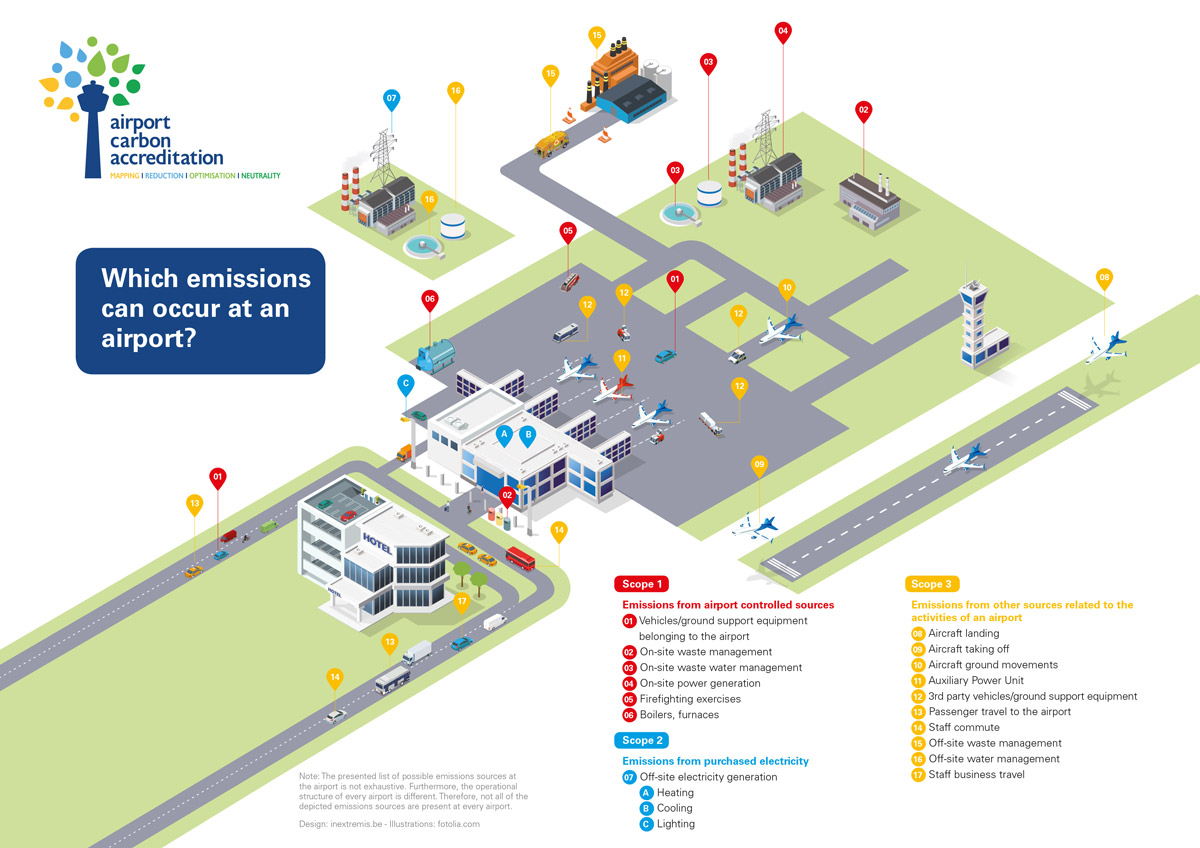Airports, vital spaces for mobility and commerce, are also one of the main sources of ambient air pollution. From gases and particulate matter to noise pollution, the aviation industry generates an environmental and social impact that has repercussions on users, workers and surrounding populations.
How much pollution do airports produce?
Air pollution from aviation is a growing concern today.
Aircraft engines emit a variety of pollutants, including
- Nitrogen oxides (NOx)
- Carbon dioxide (CO2)
- Carbon monoxide (CO)
- Hydrocarbons (volatile organic compounds)
- Particulate matter
These compounds contribute to air pollution, which can have negative effects both locally and globally, contributing to climate change through the release of greenhouse gases.
Not to mention noise, a type of pollution that affects both airport staff and surrounding communities.
Health and ambient air quality near airports
Air quality around airports has serious implications for the health of local communities, airport workers and airport users.
Air pollutants emitted by aircraft can contribute to the development of respiratory, cardiovascular and other chronic health problems.
In fact, airport workers – including airline, ground and security staff – are constantly exposed to air pollution while performing their duties.
Fine and ultrafine particles at airports: a major health threat
As mentioned above, air pollution is not only limited to the gases emitted: airborne particles and dust also play a significant role in contributing to a growing environmental and health problem.
Particulate matter, especially the smallest particles (known as fine and ultrafine particles), stays in the air longer and can penetrate deep into the bronchi, often causing irreparable damage to the respiratory system.
The fraction of dust that can penetrate into the lung alveoli is called “respirable dust” and is classified according to particle size and lung penetration capacity as follows:
- Size greater than or equal to 50 microns: cannot be inhaled.
- Between 10 (PM10) and 50 microns: retention in nose and throat.
- Less than or equal to 5 microns: penetrate into the pulmonary alveoli. This group includes fine particles PM2.5, PM1 and ultrafine particles (UFP).
Studies have shown that prolonged exposure to fine and ultrafine particles is associated with chronic respiratory diseases such as asthma and bronchitis, lung cancer in non-smokers, as well as cardiovascular problems.
Noise pollution at airports
Another important pollutant to be considered in the airport environment is noise, which is mainly generated by aircraft operations such as take-off, taxiing and landing of aircraft and terminal activities.
These noises, characterised by significant sound pressure levels, contribute to air pollution both within the airport and in the surrounding area.
Prolonged exposure to airport noise can have adverse effects on both workers and residents, affecting sleep patterns, stress, headaches, high blood pressure and other cardiovascular problems.
Air and noise pollution control
Effective management of air and noise pollution in airport environments requires advanced environmental monitoring technologies, as these solutions play a crucial role in early identification of problems, assessment of impacts and implementation of mitigation strategies.
Air quality sensors are essential to assess air pollution, mainly concentrations of pollutants such as nitrogen dioxide (NO2), particulate matter (PM10 and PM 2.5), CO and volatile organic compounds (VOCs).
In addition, noise monitoring systems must be incorporated to provide real-time data on noise levels, frequency and sound pressure in the areas surrounding airports.
All this without forgetting weather stations, as the dispersion of pollutants is closely linked to meteorological conditions of wind speed and direction, temperature and humidity.
Environmental Monitoring Solutions for Airports
At Envira, we have several solutions for monitoring air pollutants both inside and outside airports.
Indoor Air Quality: In an enclosed space with a large number of people and users, it is essential to monitor the indoor air quality in order to provide optimal environmental conditions for users and workers. The Nanoenvi IAQ indoor air quality monitor allows you to monitor the indoor air quality in real time.
Ambient air quality: different solutions are available for monitoring outdoor air quality, depending on the performance required.
- Nanoenvi EQ: a compact and portable perimeter monitoring station that can monitor the most common pollutant parameters such as CO, NO, NO2, SO2, PM1, PM2.5, PM10, VOCs and noise, as well as temperature, humidity and air pressure.
- AQMS: Equipped with reference instruments and a data validation system, these ambient air quality monitoring stations are ideal for setting up air quality monitoring networks at airports and providing data to the relevant authorities.
In this way, Envira provides a complete solution for all environmental monitoring needs at airports.












